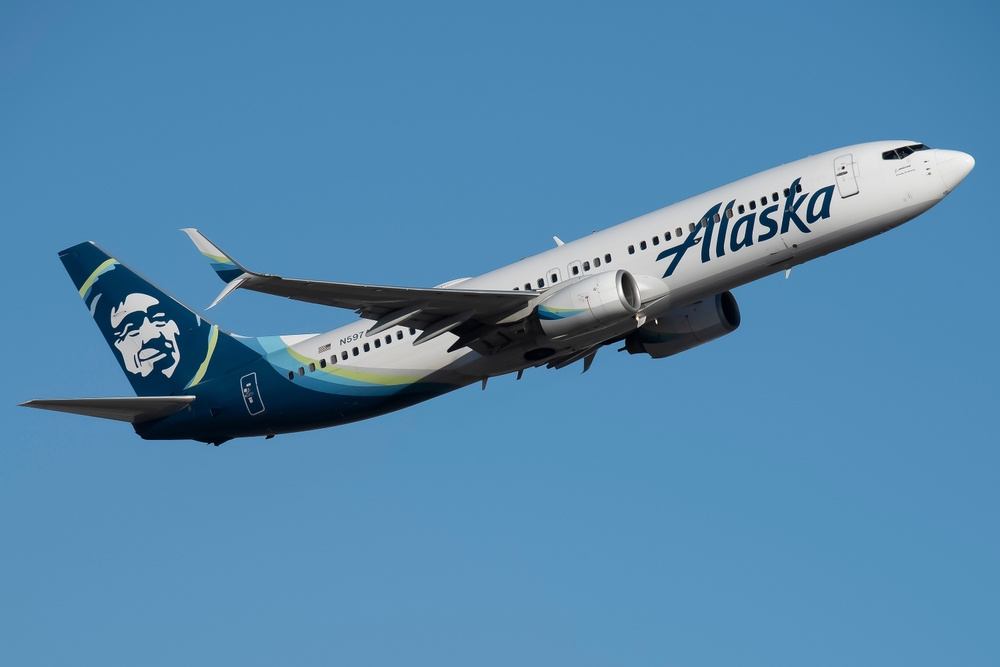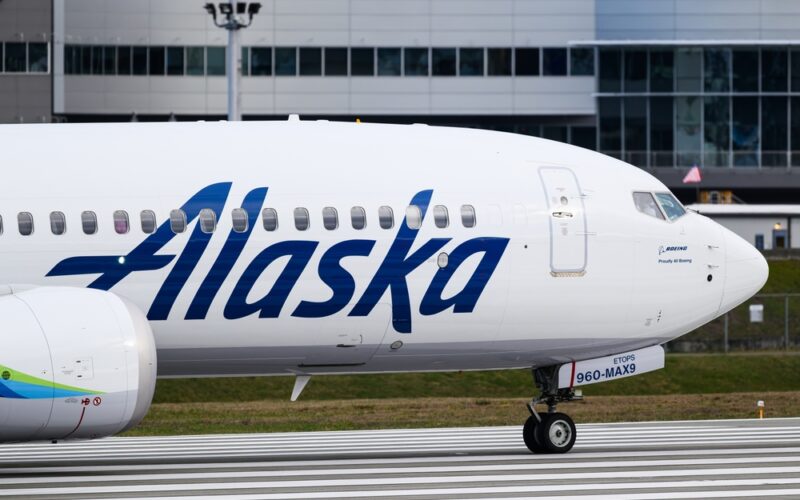Alaska Airlines has resumed full service across its network following a computer glitch that caused the Federal Aviation Administration (FAA) to issue an urgent ground stop order upon the carrier on April 17, 2024. Any of the carrier’s flights that were not airborne at the time of the order were unable to depart as a result. However, after around an hour and with the software malfunction resolved, flights were back in the air, albeit with rolling delays for the remainder of the day.
At around 07:30 Pacific Standard Time (PST), the FAA ordered a ground stop for all flights operated by the carrier along with its regional subsidiary Horizon Air. According to reports, an issue had arisen with the airline’s system that it uses to calculate aircraft weight and balance – integral information required for the safe dispatch and operation of any flight. The ground stop did not apply to Alaska flights operated by regional carrier SkyWest, which operates its own independent software system.
According to the carrier, the issue arose following a scheduled software upgrade that for reasons still being investigated by the airline, failed to integrate with existing systems. As a result, the entire system failed just as the company’s first wave of flights for the day were due to depart from various airports around the US and Canada.
In a statement, the FAA said that Alaska Airlines had “asked the FAA to pause the airline’s mainline departures nationwide,” after becoming aware of the software issue. Meanwhile, in response to passenger complaints on social media platform X, the airline said it was working on getting people back in the air as soon as possible.
Fortunately for both the airline itself and tens of thousands of its customers, the glitch was resolved after around an hour, following which the ground stop was lifted, and a full service was resumed.

“We experienced an issue while performing an upgrade to the system that calculates our weight and balance,” said a company statement. “Out of an abundance of caution, we requested a ground stop for all Alaska and Horizon flights, which was instituted at approximately 07:30 PST.
“The issue was mitigated and the ground stop for Alaska and Horizon flights expired at 08:30 PST. We have begun releasing flights. Residual delays are expected throughout the day. We apologize for the inconvenience and encourage guests to check the status of their flights on [the company website] or the Alaska App before heading to the airport.”
Although Alaska said that although there had been some rolling delays resulting from the ground stop throughout the remainder of the day, all passengers were ultimately flown to their destinations and that there would be no ongoing repercussions for its operations in the coming days.


15 comments
Sure looks like ATC sent the CRJ straight into the Blackhawks flight patch when it switched their approach from RWY1 to RWY33.
The Blackhawk was hugging the East coastline as directed at 400′, and the CRJ would have been on the West coastline, until the runway switch and straight into the patch, descending. It appears the altitude was approx 375′ at the time of impact.
The Helo was asked if the CRJ was insight, however no confirmation the CRJ was advised of the traffic, and both were on different frequencies, and could not hear each other or their instructions.
What a shame, and seems like an ATC procedures and instructions were lacking.
BS, The helicopter corridor has a max altitude of 200 feet, the Army chopper was obviously way above the required maximum altitude, and outside the designated corridor, it is 100% the Army chopper pilot’s fault.
Must be ATC issue of miss commutation.
There will be nothing else.
No ATC advised the chopper 12 minutes before the crash, chopper responded that they were in visual contact, the chopper was 100′-150′ above its maximum allowed altitude, and crashed into the plane because the chopper pilots failed in every way. It is pilot error on the Army’s side, 100%
There will be ATC COMMUNICATION GAPE, I THINK SO.
Seems on video CRJ was on descend approach and collided with Heli. My assumption on descending approach (which would be very hard to see anything in front of you other then runway lights and city lights) and heli was exactly on their course. It seems that tower management of traffic there is very troubling, also Heli did not have CRJ in sight which is red flag on first place. It seems that issue is pointing combination of traffic congestion and traffic management and Heli failure to see and avoid.
Absolutely idiotic to conduct military night training in a busy aircraft corridor. Night Vision training would have made this worse. An airliner on a published approach segment should be free of interference.
I am surprised the air collision warning systems did not go off in either aircraft.
In the helicopter route chart over the Anacostia and Potomac Rivers, it is indicated that the maximum altitude is 200 ft. exactly at the accident site.
Enrique Velez FAA ATP-H #2452840
Most probably because the transponder of the helicopter was switched off!
Agree with Tom Falley, an airliner on a published approach segment should be free of any interference, sometimes the Atc wants to chew more than they can handle, and the result is what we saw, very sad and totally avoidable
On the map of Routes 1 over the Anacostia River and Route 4 over the Potomac for helicopters, it is indicated that the maximum altitude is 200 ft.
So many idiotic comments. From the top. Controller gave pilot traffic info. on the CRJ and pilot initiated visual separation and was advised that CRJ was transitioning to RWY33. Helicopter pilot did not maintain visual separation. He lost sight of CRJ and did not advise ATC probably because he was training and using night vision goggles. Controller observed that helicopter was approaching the CRJ and advised helicopter to pass behind but helicopter had lost sight of CRJ TCAS does not work at low altitudes to prevent pilots from being distracted during critical phase of flight. This aircraft was on a visual transition to landing runway and not on a published segment.
As close as they were to Reagan the plane was too high to land safely on those runways. Especially on the shorter 33, to which it deviated just before the collision. The chopper was on landing approach to Belvoir about 15mi to the south, so at appropriate altitude for that approach. If 1 controller was running both planes they should all have been on the same channel and able to hear each other, but if the chopper crew were still using night vision gear, that course changed by the jet could well have blinded them temporarily, as the jet’s lights hit them in the face essentially. Even without night vision gear, a jet’s landing lights are incredibly bright and can be disorienting, when hitting you in the face at night.
I’m not sure but I think the helicopter’s reporting the wrong altitude which did not alert the ATC and the ATC backed off the helicopter once the helicopter acknowledged that he saw the CRJ.
The helicopter appears to not have seen the CRJ and his Mode C transponder was reporting 200ft altitude to the tower and to the helicopter’s pilot. The pilot had some sort of optical illusion/misjudgment thing going on which led to the crash or for some ungodly reason he did it on purpose.